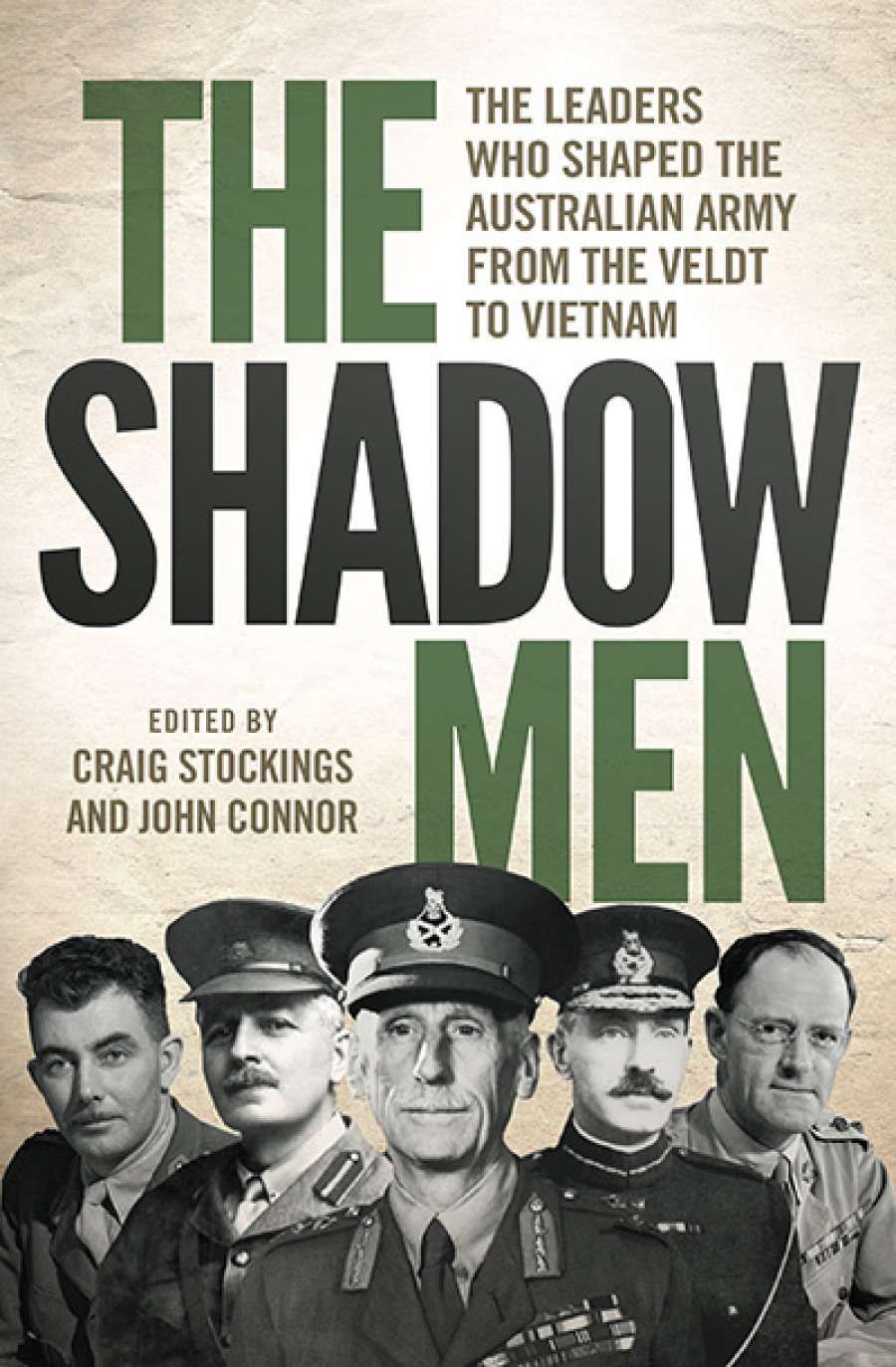
- Free Article: No
- Contents Category: Military History
- Custom Article Title: Seumas Spark reviews 'The Shadow Men: The leaders who shaped the Australian Army from the Veldt to Vietnam' edited by Craig Stockings and John Connor
- Book 1 Title: The Shadow Men
- Book 1 Subtitle: The leaders who shaped the Australian Army from the Veldt to Vietnam
- Book 1 Biblio: NewSouth, $34.99 pb, 279 pp, 9781742234748
A difficulty of writing military history is in making it interesting to people who are not military historians. The subject involves endless acronyms, and words and concepts that mean little or nothing to most people: corps, ordnance, second echelon, and many more. Some military histories drown in detail that readers other than the keenest specialists find dull. In this book, the editors and authors have done well to avoid minutiae and military jargon as much as possible. The detail that remains does not get in the way of the biographies. The authors succeed also in placing the lives of their subjects in a broad context, telling of the people and tenor of the times of which they write. The late Jeffrey Grey, author of three of the ten chapters, does an especially good job of linking military history to social history. His portrait of Colonel E.G. Keogh, a scholarly officer, begins: ‘The army, like Australian society generally, is usually mistrustful of intellectuals and uncomfortable in dealing with them.’ I wanted to read on. Grey begins another chapter, on Brigadier John William Alexander O’Brien, by noting the ways in which World War II has shaped modern Australia. Thus we learn not just of O'Brien’s career in the army, but how the decisions he made were important in the context of the development of postwar Australian society. O’Brien was responsible for providing soldiers with equipment to fight the war, a job that involved balancing the army’s need for precious resources with that of the civilian economy. Construction of another tank meant less metal was available to lay new railway track or build a hospital. Military history is most important and engaging when it extends its boundaries.
 John William Alexander O'Brien
John William Alexander O'Brien
(Australian Army, Wikimedia Commons)In this vein, the editors might have invited women to contribute to this book. While military history has been, and still is, written mostly by men, gradually this is changing. There are more and more female scholars in this field in Australia, many of them young. The work of early career historians is included here, and for that the editors are to be commended. But not one is a woman.
An interesting element of The Shadow Men is what the book reveals about the army as a social and political organisation. The biographies tell of the part that timing, luck, influential patrons, and animus play in army life. For an organisation that works on the idea of individuals uniting to serve the national good, ego and jealousy are surprisingly powerful forces. In his chapter, Karl James explains how Sydney Rowell’s career was hijacked by the breakdown of his relationship with Thomas Blamey, Australia’s senior military officer in World War II. Blamey sacked Rowell from the command of New Guinea Force in 1942, then sought to force his retirement from the army. Politicians and a senior public servant protected Rowell, but even then he spent years in exile, kept from important jobs by Blamey. Not until after the war had ended and Blamey retired did Rowell’s career resume in earnest.
Who will read this book? Devotees of military history, certainly. But it deserves a wider audience. In telling of the life and times of their subjects, the contributors have produced biographies which offer something for all those interested in modern Australian history.


Comments powered by CComment